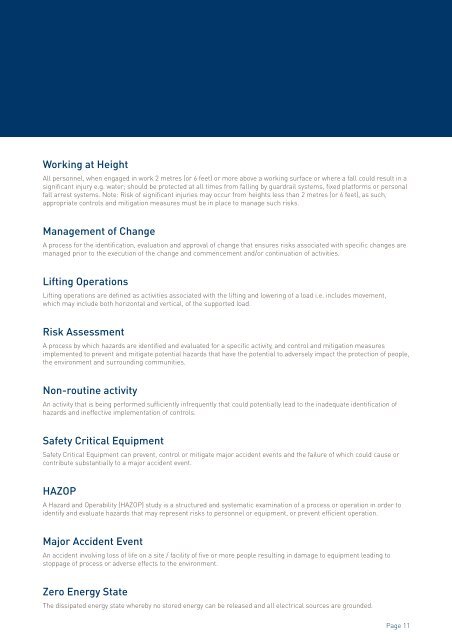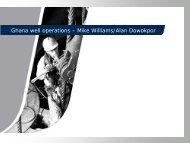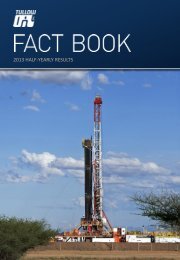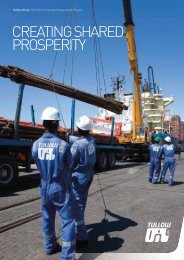Tullow safety rules - The Group
Tullow safety rules - The Group
Tullow safety rules - The Group
Create successful ePaper yourself
Turn your PDF publications into a flip-book with our unique Google optimized e-Paper software.
Working at Height<br />
All personnel, when engaged in work 2 metres (or 6 feet) or more above a working surface or where a fall could result in a<br />
significant injury e.g. water; should be protected at all times from falling by guardrail systems, fixed platforms or personal<br />
fall arrest systems. Note: Risk of significant injuries may occur from heights less than 2 metres (or 6 feet), as such,<br />
appropriate controls and mitigation measures must be in place to manage such risks.<br />
Management of Change<br />
A process for the identification, evaluation and approval of change that ensures risks associated with specific changes are<br />
managed prior to the execution of the change and commencement and/or continuation of activities.<br />
Lifting Operations<br />
Lifting operations are defined as activities associated with the lifting and lowering of a load i.e. includes movement,<br />
which may include both horizontal and vertical, of the supported load.<br />
Risk Assessment<br />
A process by which hazards are identified and evaluated for a specific activity, and control and mitigation measures<br />
implemented to prevent and mitigate potential hazards that have the potential to adversely impact the protection of people,<br />
the environment and surrounding communities.<br />
Non-routine activity<br />
An activity that is being performed sufficiently infrequently that could potentially lead to the inadequate identification of<br />
hazards and ineffective implementation of controls.<br />
Safety Critical Equipment<br />
Safety Critical Equipment can prevent, control or mitigate major accident events and the failure of which could cause or<br />
contribute substantially to a major accident event.<br />
HAZOP<br />
A Hazard and Operability (HAZOP) study is a structured and systematic examination of a process or operation in order to<br />
identify and evaluate hazards that may represent risks to personnel or equipment, or prevent efficient operation.<br />
Major Accident Event<br />
An accident involving loss of life on a site / facility of five or more people resulting in damage to equipment leading to<br />
stoppage of process or adverse effects to the environment.<br />
Zero Energy State<br />
<strong>The</strong> dissipated energy state whereby no stored energy can be released and all electrical sources are grounded.<br />
Page 11

















